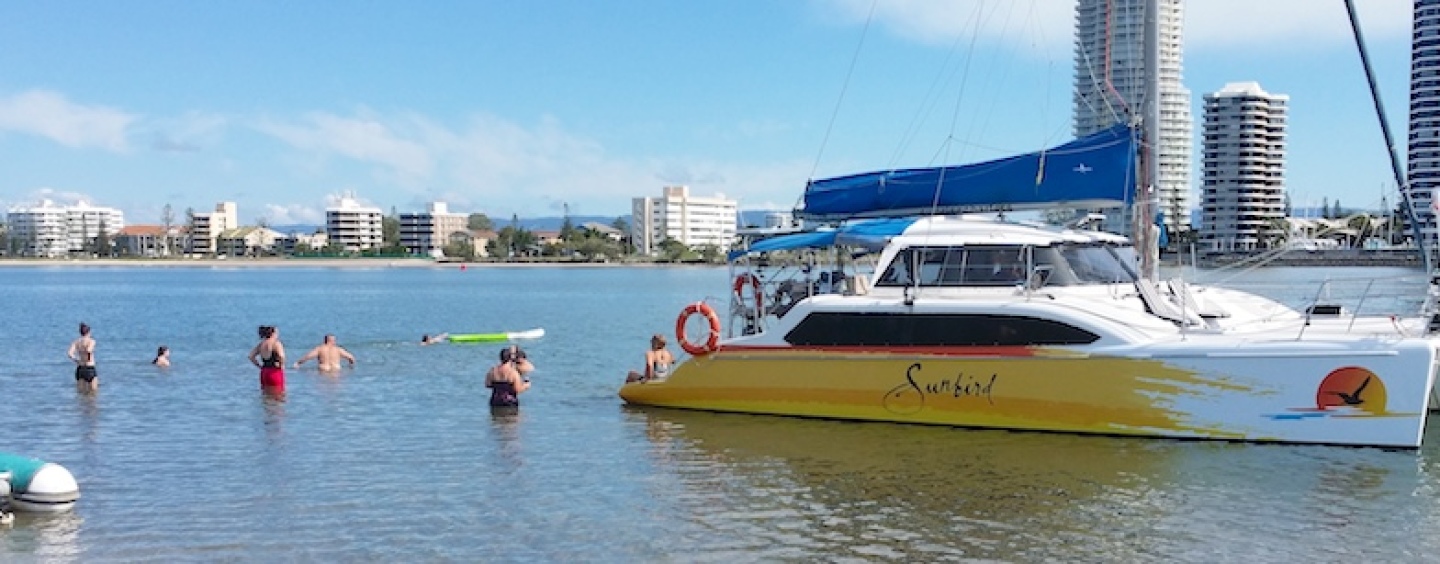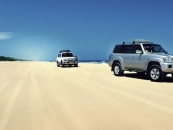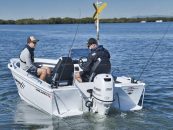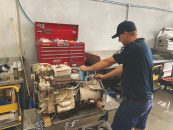Famous as an international and domestic tourism destination, the Gold Coast is a hub of tourist activities that range from surfing, shopping, family recreation, sports, fishing, parties, events, water sports, dining, boating and sailing, bushwalking, swimming, adventure, wildlife—the list goes on!
There are several subsets of tourism that exist on the Gold Coast, and one significant one is nautical or boating tourism. Although it is not a very popular concept in Australia, it has a great potential to be a driving force for the city’s tourism sector.
What is nautical or boating tourism?
As there are varied interpretations and definitions of tourism, there are also a myriad of concepts that are related to nautical tourism. Boating tourism, water-based tourism, marine tourism are three of the more common and more directly related concepts.
It is too restricting to define the concept of nautical tourism by placing exclusive focus on boating, yachting or sailing as the main objective or means of transport for the visit. Other activities, such as fishing, diving, watersports or transport, may also require the use of boats or water-borne vessels to complete the experience. Attending a watersports event can also be part of the definition of boating tourism, such as coming to watch a sailing regatta or boat race event, even if the visitor does not actually take part in the sport, as suggested in a book edited by Gayle Jennings, entitled Water-Based Tourism, Sport, Leisure, and Recreation Experiences (2007). The same can be said when hiring a vessel (such as a water taxi or a resort ferry) as transport to visit an island or a water-based destination.
The broad nature of this subset of tourism is also faced with increasing diversity and growth. “As different types of vessels are invented, marketed and utilized, we are seeing an increasingly diverse range of offerings available in the nautical recreation realm,” explains Professor Mark Orams, co-chair of the International Coastal and Marine Tourism Society at the Auckland University of Technology. He cites examples that include SUP versions that facilitate touring and overnight coastal exploration, semi-submersible and submersible watercrafts, amphibious vehicles that facilitate both water-borne and land-based travel, and a wide range of boats (powered, sail, and combinations of both) from two-metre dinghies to 100-metre superyachts.
To simplify, we can incorporate the concept of nautical tourism into the broader concept of boating tourism. Boating tourism can then be defined as a subset of tourism that involves active boating, sailing or yachting, or use of any water-based vessel (except surfing), whether as the main objective or as a mode of transport for the visit, or as a means to complete an experience relating to water-based activities for sports, recreation or entertainment, for short-term (day trip) or long-term (overnight to several days, weeks or months).
What does the Gold Coast offer?
With 260 kilometres of navigable waters that include the Broadwater and the extensive canal systems and 57 kilometres of coastline, the Gold Coast is a natural destination for boating. “The city’s natural beauty combined with world-class marinas, events, shopping and dining provide a strong platform for water-based tourism,” states Councillor Tom Tate, mayor of the Gold Coast. “Each year, the Gold Coast attracts millions of visitors to enjoy our lifestyle and experiences, many of whom are attracted to recreational boating, whale-watching, fishing and many other water-based activities. Under the Gold Coast Destination Tourism Management Plan 2014-2020, beaches and waterways are identified as a hero experience—an experience that sets the city apart from its competitors and a core driver for visitation.”
The Broadwater, rivers and creeks of the Gold Coast are host to various water activities. On the Broadwater alone, tour operators offer diverse water activities that range from jet ski tours, jet boat rides, jetpack flyboard adventures, fishing boat charters, houseboat and party boat hires, to parasailing, scuba diving, windsurfing, kitesurfing, SUP, kayaking, sailing and boat tours. The Coomera and Nerang rivers also play host to wakeboarding and waterskiing activities. Dragonboating, paddling and rowing are also popular activities on rivers and creeks.
The Gold Coast waterways have played host to several water-based events, such as power boat races, regattas, rowing races, wakeboarding and waterskiing competitions, as well as major entertainment events (such as the Glow and Bleach festivals), and the annual international boat shows.
The many marinas and boat yards and other boat-related businesses available on the Gold Coast offer the boating tourism industry a plethora of amenities. While the marinas present a “home” for the visiting boats, other boat-related businesses extend major services to the vessels of the tour operators, as well as sale of vessels for use in the tourism operations.
The myriad of other land-based destinations and offerings on the Gold Coast extends and expands the boating tourist’s experience. The City Council allow access to public jetties and pontoons for loading and unloading of passengers by commercial operators, allowing land-based visitors to enjoy a boating experience. “Outlined in the Destination Tourism Management Plan is a key action to invest in waterways infrastructure (staging and connecting precincts) to create a network of activity hubs or nodes. The sustainable development of this infrastructure will provide greater opportunity for water-based tourism product development,” declares Cr Tom Tate.
Advantages of boating tourism
The economic advantages of tourism for a locality cannot be overstated. With a fast-growing global tourism market, the financial benefits of promoting tourism are substantial. However, the income from tour operators is only one aspect of the tourism economy. In a European definition of maritime tourism, it “covers tourism that is largely water-based rather than land-based, but includes the operation of landside facilities, manufacturing of equipment, and services necessary for this segment of tourism”. The inclusion of the landside facilities and manufacturing and services sectors in the definition suggests that the potential for growth in economic activity is significant.
“The demand for nautical tourism products and experiences drives a large range of industries, economic activity, and employment,” explains Professor Orams. “This is particularly the case for the Gold Coast where coastal and marine tourism attractions form the basis of the tourism industry and the lifestyle of the region. From boats design and manufacturing, to property developments focused on delivering access to coastal and marine recreation—the growth in nautical tourism has been a major catalyst for the growth of the Gold Coast region.”
He further cites other benefits. “The primary motivation for nautical recreation and tourism is related to people’s enjoyment of water-based (marine and fresh) leisure. Much of the immigration to South East Queensland and the Gold Coast is driven by images of a coastal, seaside and marine lifestyle. Combined with the climate, such imagery is seductive and has driven much of the movement of people to the area providing the main catalyst for growth. Nautical tourism and its promotion have contributed to this reputation and growth.”
Highlighting natural and wildlife resources is also an advantage of nautical tourism. This goes hand in hand with the heightened awareness of the environment and the need to protect it. “Increasing numbers of people utilising the sea for nautical recreation has placed an increased value of the use of the resources for these purposes,” Professor Orams expounds. “As a consequence, recreational uses of areas have been factored into resource management decisions and, in some cases, have stopped more destructive alternative uses of those resources (eg. sand mining, dumping of waste, land reclamation). An important factor in the designation of the Moreton Bay Marine Park and other protection of local natural resources (eg. South Stradbroke Island) has been because of their value as recreational resources. Nautical tourism is one of these significant recreational uses. Boaties (most) love high quality marine ecosystems and are prepared to advocate for their protection.”
Additional advantages include benefits to the community as well as opening opportunities for visitor experience. Rob Mundle OAM, Southport Yacht Club Past Commodore, lists some specific advantages not only for the Southport Yacht Club but also for the rest of the Gold Coast community. “The advantages of nautical tourism include financial support for the Club and the local community, the opportunity to profile the appeal of the Gold Coast to the wider market via the experiences the visitor enjoys, and the widest possible market appeal from superyachts to all types of sail and powerboats, plus tinnies, jet skis and kayaks.” The Club hosts numerous annual powerboat and sailing events. It is also the only club on the Gold Coast that manages a marina, runs boatyard facilities, and offers dining, conference and events services.
Challenges of boating tourism
While the benefits of boating tourism are plenty and obvious, the challenges this particular sector face are equally great, and many are “hidden” or are seen more as challenges for the local marine industry or local boaties.
For instance, the Gold Coast City Marina (GCCM) cites future development for the Broadwater and the Spit as a number one challenge for local boaties and businesses. “Ensuring that the local and state authorities are putting the priority on the future planning of the Spit and the Broadwater is essential,” states Kym Fleet, business development manager at GCCM.
The GCCM have been very vocal about developing policies, programs and infrastructure that encourage more and bigger boats to visit the Gold Coast. “The Gold Coast is losing business to ports further north,” Kym Fleet explains. “A Port of Clearance station at the Spit would allow international visitors to enter Australia on the Gold Coast and subsequently be looked after by the Gold Coast businesses. We also need to relax the laws for internationally flagged vessels. Currently, these vessels (including superyachts) have a massive barrier to make the trip to Australia.”
The seeming “endless” list of requirements for commercial boat registration compliance, and the costs that accompany them, have hindered many local small-scale operators from offering alternative boating tour products. The mass tourism market has been the focus of many operators, relegating the niche tourism market as a less viable option.
While most of the boating industry’s concerns focus more on economic development, other challenges faced by the boating tourism sector go beyond economic benefits. Professor Orams cites challenges for the city relevant to the marine resources, boating safety, and social impact. He lists the following: degradation of marine resources; crowding and social carrying capacity; increase in accidents on the water as a consequence of diminishing focus on fundamental navigation skills, and water and boating safety practices; and, increasing costs and exclusivity in use of resources, as a consequence of a limited supply of high quality marine destinations and a higher demand for nautical tourism experiences.
Monitoring boating tourism activities also poses a challenge. For many Gold Coast visitors, a day trip on a hired vessel for fishing, whale watching, scuba diving, river cruise, watersports, jet skiing or island visit is a popular choice. These common activities are monitored for tourism statistics, and are commonly referred to as part of boating or water-based tourism. The other boating activities less highlighted but of equal importance are: (1) visiting the Gold Coast by boat, and (2) using the boat as accommodation for the duration of the visit, both of which clearly fall under the category of nautical tourism. Although these two activities are offered on the Gold Coast, there are no readily available data that show the number of visitor arrivals by boat or yacht (whether owned or chartered, or self-driven or skippered) or visitor accommodations in boats or yachts (bareboat or skippered).
On the one hand, visiting boaties whose main objective is to enjoy the tourist amenities of the city and general visitors who engage in boat-related activities are clearly considered boating tourists. On the other hand, what about boaties whose main objective is to have the boats serviced at a particular boat yard or marina in the city? Are they considered boating tourists for purposes of the definition? Marinas and boatyards can provide data on the number of visiting boats they have serviced within a given period, but are these reported as tourism arrivals? This is a major challenge for tourism bodies to determine quantity and quality of experiences related to nautical or boating tourism.
What can be done in the future?
There is no question that the Gold Coast is indeed a boating tourism destination. The challenges listed in this article are by no means exclusive or exhaustive, so we can expect that other matters may arise as new tourism concepts, activities and destinations are developed.
However, in the process of planning and infrastructure development for a sustainable boating tourism industry, the key stakeholders in the tourism and the boating industries may consider the following suggestions by Professor Orams:
1. Protect the quality of the resource! Without healthy, resilient marine ecosystems, the nautical tourism industry cannot survive. Nautical tourism stakeholders should be among the strongest marine conservation advocates.
2. Ensure that local boating opportunities are given equal weight in decisions on utilisation of boating resources. Locals’ rights to access and to enjoy their recreation in their own home must be protected.
3. Ensure that visitors are appropriately educated about local expectations in terms of boating behaviour, disposal of waste, behaviour around wildlife, respect for local resources, people and other uses of popular areas (surf-breaks, dive sites, fishing spots, anchorages), including water-safety practices. When a visitor gets in trouble, it is the locals who have to risk their own safety to rescue them.
4. Create a system whereby visitors make a contribution to the costs of maintaining the facilities and resources that they use. For example, an [environmental fee] that can be used to help meet the costs of important services, such as the provision of waste-water pump-out stations and the subsequent treatment of that water, the provision of boat ramps, mooring buoys and campsites, the management of Moreton Bay Marine Park, and protection initiatives for beaches, bays and endangered wildlife.
5. Ensure that local commercial operators who serve the nautical tourism industry have an association that encourage best practices, and inform, educate, advocate for a strong, sustainable and responsible industry, whose role is more than maximising profit but rather to promote, protect and enhance the special marine environment that surround the Gold Coast region.
Gold Coast stakeholders can also follow the examples of other boating tourism destinations with programs that have proven sustainable. One of these is the “Sydney Harbour Destinations Plan” launched in 2013, where participating marinas offer temporary berthing or moorings, and access to marina facilities for the visitors. Policies that promote safety for all waterways users, such as no-go zones for PWCs and banning of irregular driving of watercraft, are also in place on Sydney Harbour.
Future land and property development planning should also include boating tourism implications (as well as coastal and other water-based tourism) for the city. Currently, proposals for developments on the Broadwater and the Spit have been highly contentious, and have created conflicting attitudes towards the management of resources. Future activities or businesses may be regulated in a manner similar to the “Noosa River Plan” and the “Guidelines for the Establishment of New Businesses on the Noosa River”. Using an inclusive approach in planning may mitigate, if not avoid, conflict.
A visiting boatie or a general tourist who decides to have a boating experience on the Gold Coast is more likely to have a better experience at destinations where the locals promote and protect a clean, safe and healthy natural environment for boating, while having a reasonably convenient access to land-based amenities and public transport that enhance the visiting experience. If stakeholders maintain a broad perspective and a mindset that considers the needs of the local community, local industries and the natural environment as priorities in developing tourism policies, programs and infrastructure, then the Gold Coast can become a truly sustainable boating tourism destination—without money and egos getting in the way.
By Roselle Tenefrancia



























